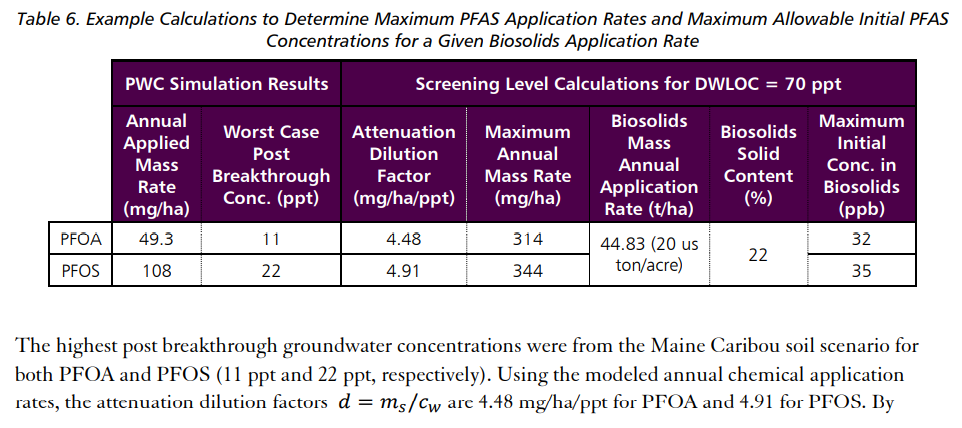The National Association of Clean Water Agencies (NACWA), in partnership with the National Council for Air and Stream Improvement (NCASI) and the American Forest and Paper Association (AF&PA), issued a new report in June prepared by Stone Environmental as a “how-to” guide to understanding the Pesticide Root Zone Model (PRZM) and how it may be used to screen for per- and polyfluoroalkyl substances (PFAS) potentially leaching into groundwater from land applied residuals and biosolids.
The PRZM approach uses the Pesticide Water Calculator developed by the U.S. Environmental Protection Agency (EPA) to simulate pesticide applications to land surfaces and the subsequent transport to and fate of these chemicals to surface water and groundwater. This method is widely used by EPA and states for screening-level assessments and refined risk assessments and may be the best model for estimating PFAS fate and transport.
NACWA hopes the report will help state and federal regulators as they continue to work on management strategies for PFAS and consider models for screening purposes, to better understand key inputs, outputs, local site-specific conditions, and how sensitivities and assumptions play into such simulations. This step-by-step guide to PRZM includes simulations and provides the necessary applications to ultimately yield the greatest confidence when using this modelling approach. Use of this PRZM screening-level modeling approach will allow regulators and other stakeholders to efficiently evaluate PFAS groundwater contamination potential and determine whether a more comprehensive and rigorous modeling and/or field investigation is warranted.
The Stone Environmental report includes a simulation for land-applied biosolids in Maine soils using the EPA Health Advisory Limit for PFAS in drinking water (70 parts per trillion for PFOA and PFOS). That simulation conservatively results in screening concentrations of 32 parts per billion (ppb) for PFOA and 35 ppb for PFOS in biosolids. The State of Maine used the SEVIEW/SESOIL model to arrive at its current screening limits of 2.5 for PFOA and 5.2 for PFOS.
This NACWA/NCASI effort followed work by Stone Environmental for NEBRA on behalf of its Maine members as well as a review of other models for evaluating PFAS in land applied biosolids [Review of Models for Evaluating Per-and Polyfluoroalkyl Substances in Land Applied Residuals and Biosolids | NCASI]. The initial Stone Environmental report for NEBRA back in 2019 raised some questions about the appropriateness of using SEVIEW/SESOIL to model PFAS fate and transport. SESOIL is typically used to evaluate the fate and transport of leaking underground petroleum storage tanks. The 2019 Stone report found that “The primary impediment to off-site transport of PFOA/PFOS in biosolids is sorption to the higher organic matter content of biosolids and soils in the upper layers of the profile. A modeling approach capable of more accurately representing this concept is required to enable a more accurate assessment of maximum biosolids PFOA/PFOS concentrations to meet tap water protection goals.”
The State of Maine legislature recently adopted an interim PFAS drinking water limit of 20 ppt for 6 PFAS while directing the Department of Health and Human Services (DHHS) to develop final limits with an advanced notice of rulemaking due before August 1, 2023 (search for LD-129 from the 130th legislative session at Results: Bill Tracking and Text Search (maine.gov)). The final rule is due on or before June 1, 2024. The legislation, which was signed by Governor Janet Mills on June 21st, authorizes the repeal of the interim drinking water standards and testing requirements upon the effective date of the final rules by DHHS.

